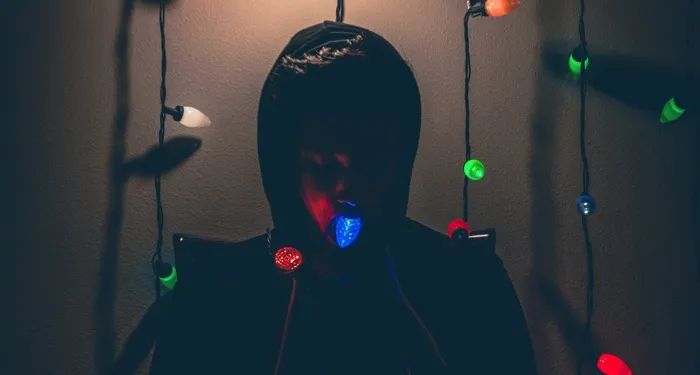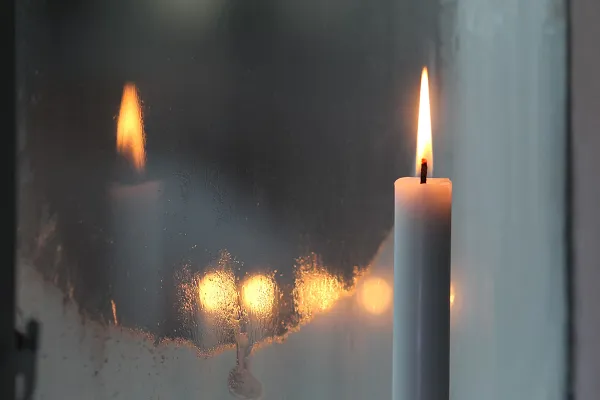
Why We Used To Tell Ghost Stories On Christmas Eve (And Why We Should Restart The Tradition)
Charles Dickens’s A Christmas Carol is pretty much the only Christmas story with ghosts, so it may surprise you to learn that Dickens wasn’t exactly working with an original idea. When A Christmas Carol was first published in 1843, it was in line with two longstanding traditions — observance of the Christmas holiday itself, and the practice of staying up late to tell ghost stories on Christmas Eve — both of which had begun to fall out of favor by the mid-19th century. A Christmas Carol revitalized both.
Before we dive into this, I should probably clarify that I don’t intend for this to exclude anyone. Even though millions of people celebrate it secularly, at the end of the day Christmas is a Christian holiday, which means that members of other faiths may feel uncomfortable with an observance or tradition based around it. However, much like the time-honored American Jewish tradition of eating Chinese takeout on Christmas doesn’t constitute an endorsement of the holiday, there’s room on December 24 for a few spooky stories, no matter your religious affiliation. By the end of this piece, I think you’ll agree: we need to start telling ghost stories on Christmas Eve again.

Wait, Did Charles Dickens Save Christmas?
Looking at how much stock we put into Christmas — Americans alone spent more than $1 trillion on Christmas gifts in 2019 — it’s easy to believe that the holiday has always been a major fixture in the western world. And it has…mostly.
Christmas was actually on the decline when Dickens published his Carol. In the mid-17th century, Oliver Cromwell’s Parliament effectively banned Christmas celebrations for 20 years, by making it illegal to sing on December 25. The holiday resurged during the Restoration, but industrialization soon led to another not-so-festive downturn. According to Tavistock Books founder Vic Zoschak, Christmas “was still a work day,” for many folks in Dickens’s time.
Although the story of Ebenezer Scrooge contributes to the holiday’s boost in popularity during the Victorian period, it didn’t singlehandedly save Christmas. But it did breathe new life into the centuries-old tradition of telling ghost stories on Christmas Eve. In fact, the tradition was so popular by the end of the 19th century that writer Jerome K. Jerome observed in 1891: “Whenever five or six English-speaking people meet round a fire on Christmas Eve, they start telling each other ghost stories…It is a genial, festive season, and we love to muse upon graves, and dead bodies, and murders, and blood.”
But Why Did We Tell Ghost Stories on Christmas Eve in the First Place?
Myriad factors contributed to the Christmas Eve ghost story tradition. One of the most influential was that humans are the storytelling animal. Storytelling was a way of life in medieval northern Europe, when and where skaldic poetry flourished, and many communities around the world maintain rich oral traditions to this day.
The kinds of stories we choose to tell reflect our fears, hopes, dreams, and religious beliefs. It’s no surprise, then, that two different religious observances played a role in normalizing the telling of ghost stories on Christmas Eve.
The Celtic pagan holiday of Samhain takes place on or around November 1, signalling the approach of winter. It’s believed that the veil between the realms of the living and dead is thin enough for the spirits to cross over and visit their old homes on Samhain.
A few weeks later comes the Germanic pagan holiday, Yule. Although it’s traditionally associated with the winter solstice, Yule’s original meaning has been lost to time. There’s evidence to suggest that it was a festival for the dead, or perhaps a New Year’s celebration. Whatever the case, ghosts and other frightful spirits turn up a lot in Yuletide stories.
It’s worthwhile to note here that Samhain takes place as the days begin to grow shorter, and Yule comes on the shortest day of the year — which may mean only a few scant hours of daylight, depending on how close you are to the Arctic Circle. Longer nights mean less light to work by, which means more time spent in doors, which means an increased need for entertainment. Ghost stories fit right in with spending seemingly endless nights huddled around the light and warmth of the hearth.
Those early stories, largely contained in the northern sagas, are particularly gory. Although Dickens’s story may be more ghoulish than you remember — the “horror…in spite of the face and beyond [Marley’s ghost’s] control,” anyone? — A Christmas Carol doesn’t hold a candle to its predecessors, at least when it comes to horror.
In his brief history of the tradition, ghost-story historian Jon Kaneko-James noted old Scandinavian stories in which Revenants — risen corpses — terrorize their former communities. In one, a man is forced to burn his wife’s corpse, along with the bodies of several other neighbors, after they go mad, die, and come back to undead life in the days following Christmas. In another, a cruel shepherd dies of exposure and later returns to his post, murdering the man who takes his place “and literally frightening [his former employer’s] daughter to death” on Christmas Day.
For the record, those early ghost stories aren’t any tamer in the British Isles. Kaneko-James mentions one tale “about a baker…who rises from the dead and tries to lie with his wife.” Yikes.
By the Victorian era, people were still telling ghost stories on Christmas Eve, but the tradition had begun to wane — perhaps due, in part, to the increased working hours of the Industrial Revolution. A Christmas Story revitalized the storytelling tradition well into the 20th century, when Christmas and the spirit world remained strongly linked in the minds of the public. Smithsonian Magazine quotes the following passage from the Book of Indoor and Outdoor Games by Florence Kingsland, published in 1904: “The realm of spirits was always thought to be nearer to that of mortals on Christmas than at any other time.”
A few short decades later, however, the tradition had died out once again. Given the two World Wars that followed one another in quick succession and claimed the lives of more than 100 million people, it’s no surprise that people stopped wanting to talk about ghosts and gore at Christmas in the early 20th century. That doesn’t mean the tradition isn’t worth reviving, however.
Why We Should Start Telling Ghost Stories on Christmas Eve Again
Yeah, I know what you’re thinking: Why would we want to start talking about ghosts again now, in the midst of pandemic season? Well, for one thing, it can comfort people to think that their loved ones might still be close enough to visit at Christmas.
But I think it goes deeper than that. When I interviewed Tananarive Due for Bustle in 2019, ahead of the COVID-19 outbreak, she observed: “Every day’s headlines remind me why we like horror stories so much…They’re a way to confront and engage with trauma from a safe distance.”
Interviewed for the same piece, horror author Dr. Steven Schlozman, MD, noted that horror was “about how we pull together, and do our best, and rise above our petty, racist or identity-borne impulses, and do what needs to be done in order to sort of get through the day” — a Christmastime message if I’ve ever heard one.
Horror opens up a space for us to process difficult emotions. When you engage with horror entertainment, Schlozman told me, “[Y]ou’re able to sort of hash out some things that have avoided being talked about, precisely because they’re so off-putting. Once they’re in that crazy displacement of horror, it actually becomes easier [to talk about them].”
Put simply, horror has the power to heal and strengthen us. From it, we learn how to recognize and navigate danger, death, and dying. At a time when so many are still dying from a global pandemic about to enter its third year, we need spooky stories to help us cope together, now more than ever.
Want to kick off your winter fun with some scary stories? Check out these holiday horror books! Want more? Here are some scary stories to read during the holidays.











